Abstract
The indirect fluorescent antibody test was used to detect antibodies to Trichomonas vaginalis in 200 antenatal patients. A total of 104 (52%) gave a positive reaction with antigen prepared from cultures of trichomonas isolated from seven of the patients. Antitrichomonal antibody was detected at a 1/4 dilution in 90% of patients with proven trichomoniasis, while the highest dilution at which antibody was detected was 1/32. IgG rather than IgM appeared to be the antibody class involved. Of those patients with no demonstrable trichomonal infection, 17% gave positive reactions at 1/4 dilution, while 64% had no demonstrable antibody. One of 30 children under 11 years of age gave a positive reaction.
Full text
PDF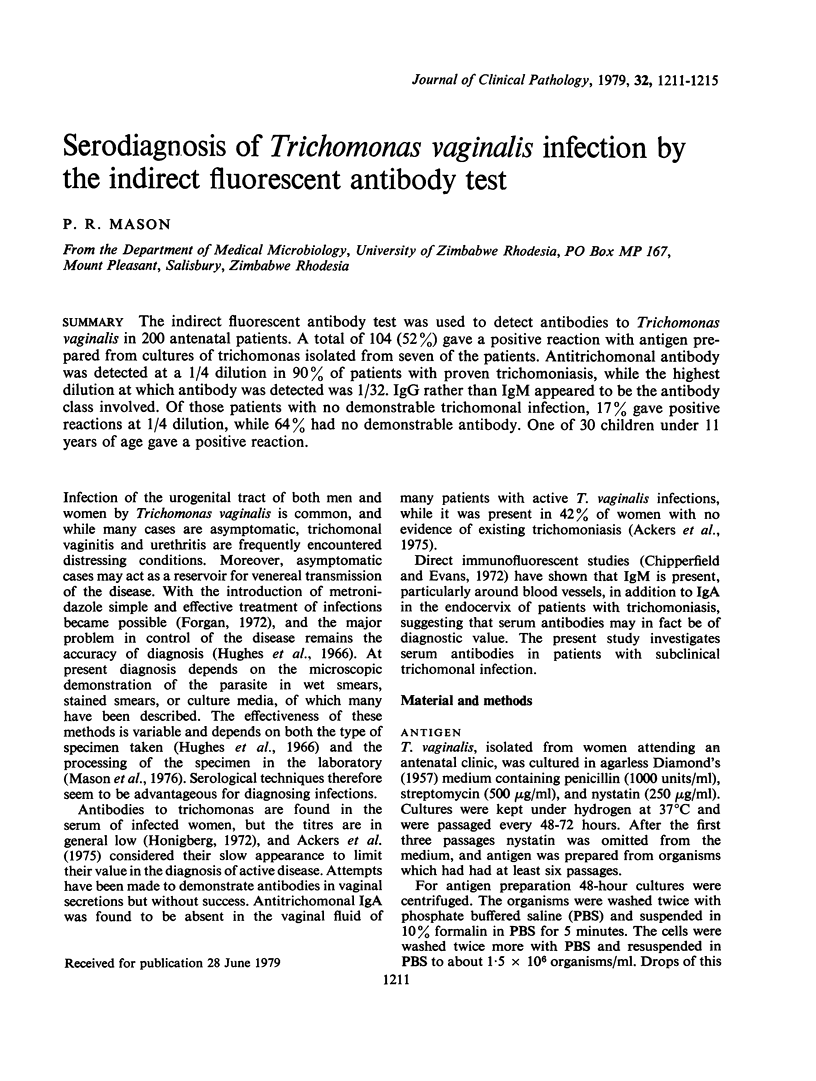
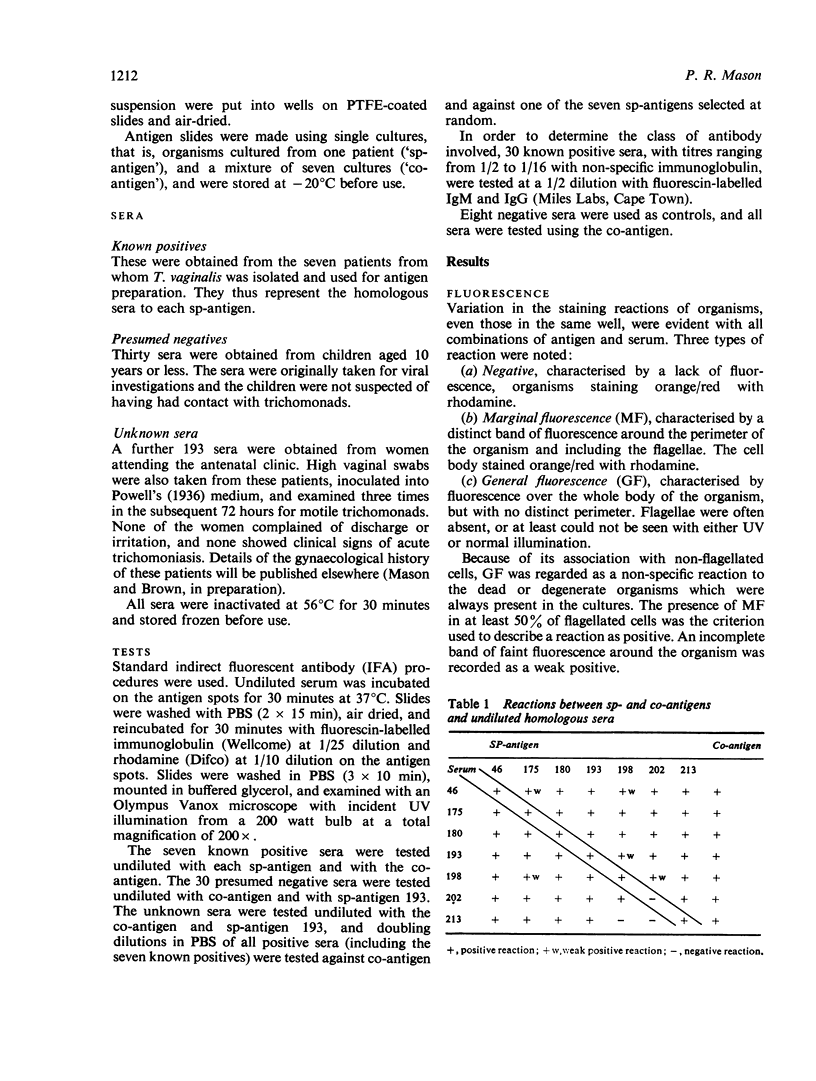
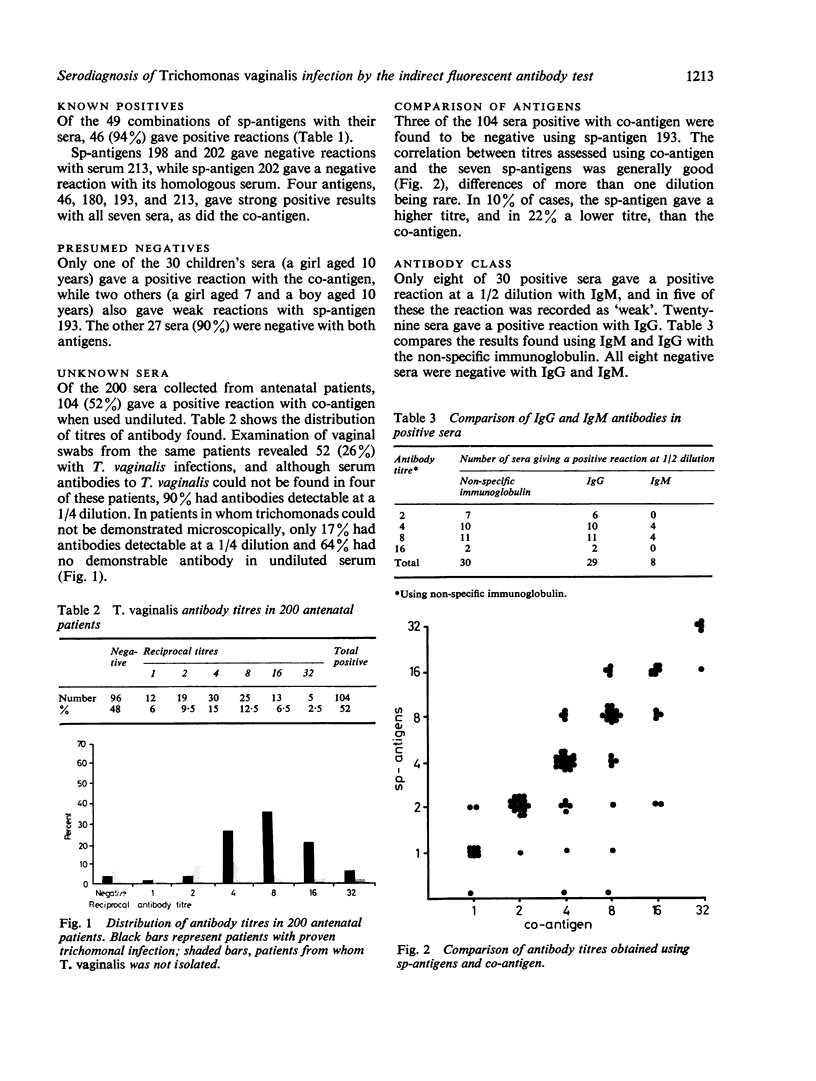
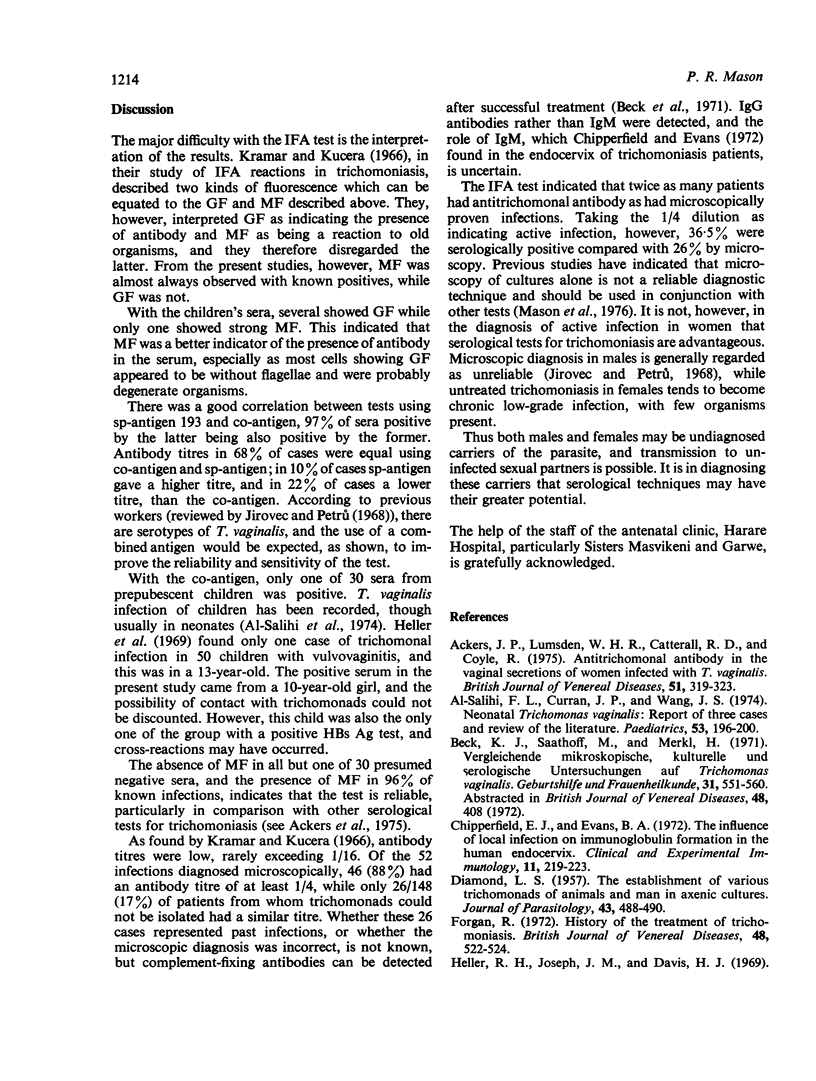
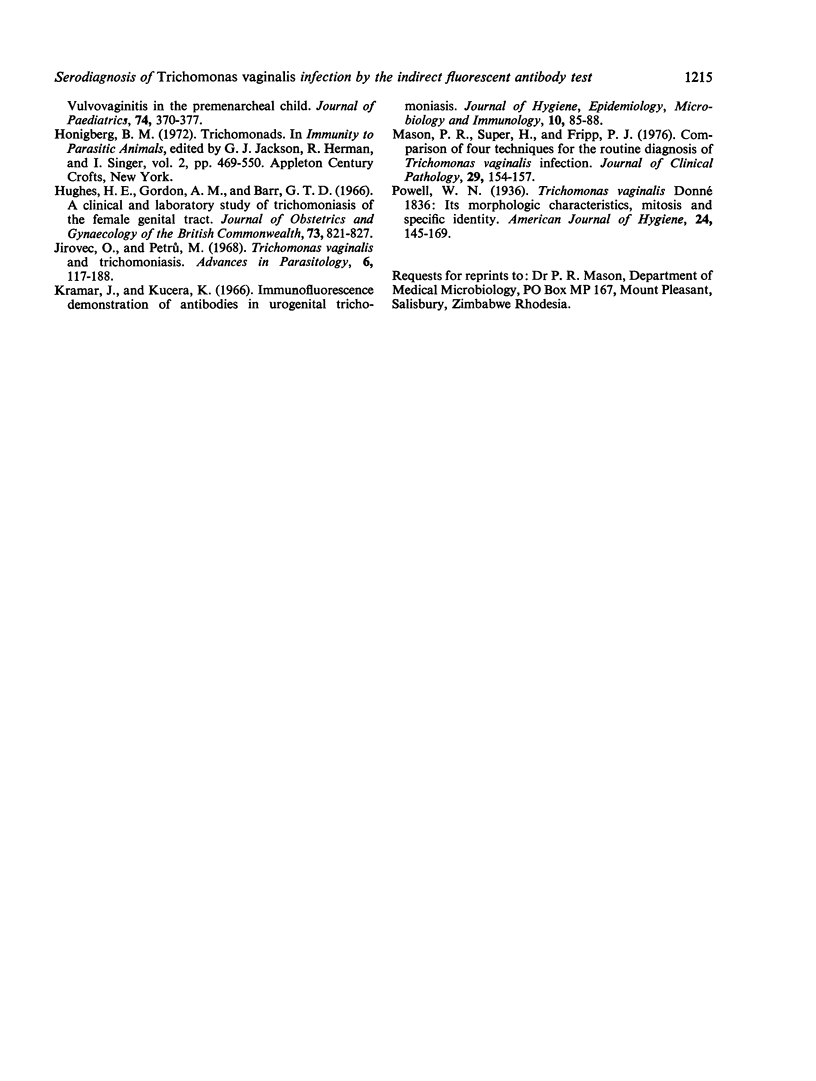
Selected References
These references are in PubMed. This may not be the complete list of references from this article.
- Ackers J. P., Lumsden W. H., Catterall R. D., Coyle R. Antitrichomonal antibody in the vaginal secretions of women infected with T. vaginalis. Br J Vener Dis. 1975 Oct;51(5):319–323. doi: 10.1136/sti.51.5.319. [DOI] [PMC free article] [PubMed] [Google Scholar]
- Beck K. J., Saathoff M., Merkl H. Vergleichende mikroskopische, kulturelle und serologische Untersuchungen auf Trichomonas vaginalis. Geburtshilfe Frauenheilkd. 1971 Jun;31(6):551–560. [PubMed] [Google Scholar]
- Chipperfield E. J., Evans B. A. The influence of local infection on immunoglobulin formation in the human endocervix. Clin Exp Immunol. 1972 Jun;11(2):219–233. [PMC free article] [PubMed] [Google Scholar]
- DIAMOND L. S. The establishment of various trichomonads of animals and man in axenic cultures. J Parasitol. 1957 Aug;43(4):488–490. [PubMed] [Google Scholar]
- Forgan R. History of the treatment of trichomoniasis. Br J Vener Dis. 1972 Dec;48(6):522–524. doi: 10.1136/sti.48.6.522. [DOI] [PMC free article] [PubMed] [Google Scholar]
- Heller R. H., Joseph J. M., Davis H. J. Vulvovaginitis in the premenarcheal child. J Pediatr. 1969 Mar;74(3):370–377. doi: 10.1016/s0022-3476(69)80193-9. [DOI] [PubMed] [Google Scholar]
- Hughes H. E., Gordon A. M., Barr G. T. A clinical and laboratory study of trichomoniasis of the female genital tract. J Obstet Gynaecol Br Commonw. 1966 Oct;73(5):821–827. doi: 10.1111/j.1471-0528.1966.tb06091.x. [DOI] [PubMed] [Google Scholar]
- Jírovec O., Petrů M. Trichomonas vaginalis and trichomoniasis. Adv Parasitol. 1968;6:117–188. doi: 10.1016/s0065-308x(08)60473-x. [DOI] [PubMed] [Google Scholar]
- Mason P. R., Super H., Fripp P. J. Comparison of four techniques for the routine diagnosis of Trichomonas vaginalis infection. J Clin Pathol. 1976 Feb;29(2):154–157. doi: 10.1136/jcp.29.2.154. [DOI] [PMC free article] [PubMed] [Google Scholar]
- al-Salihi F. L., Curran J. P., Wang J. Neonatal Trichomonas vaginalis: report of three cases and review of the literature. Pediatrics. 1974 Feb;53(2):196–200. [PubMed] [Google Scholar]


